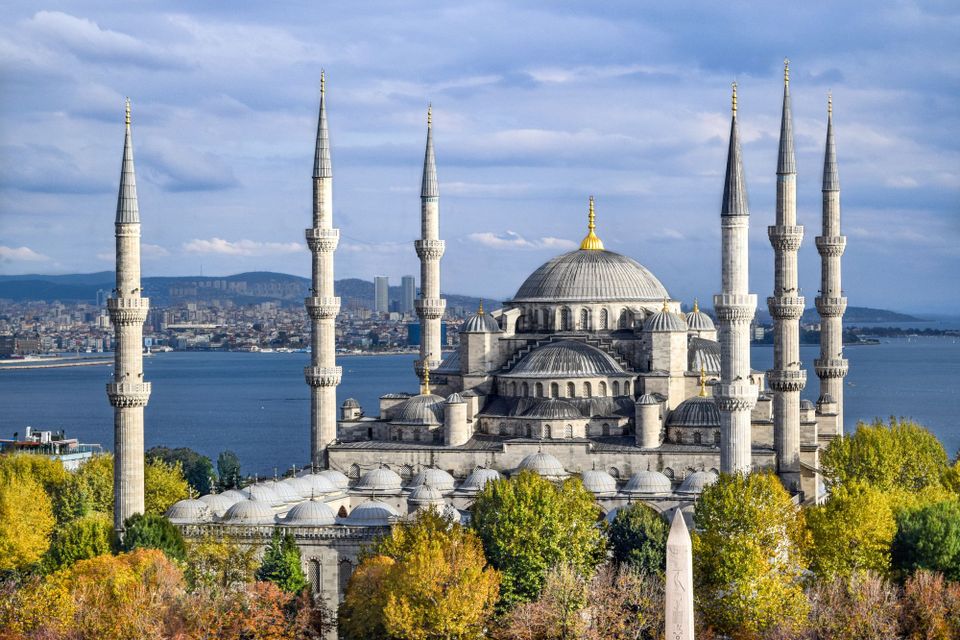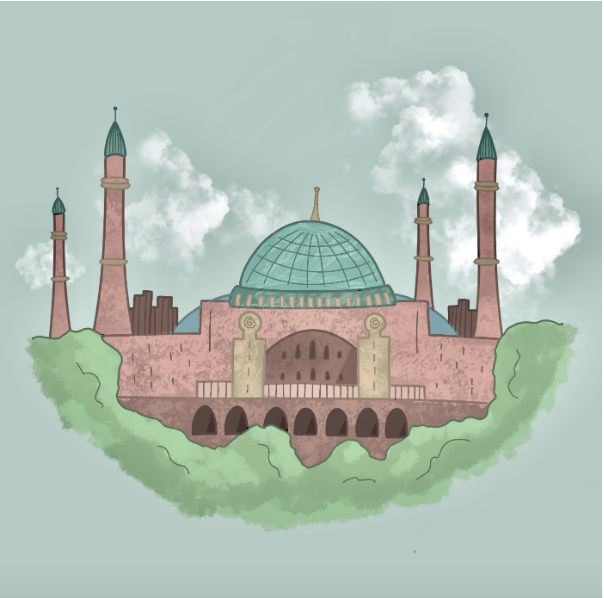The City of Constantinople

Constantinople was the gateway to Europe. It was founded by the Byzantine empire and was one of the most influential cities in history. Constantinople had everything, from wealth to architecture to defences, you name it. But after it got taken over by the Latin Empire, it was severely weakened, leading the city to be under the Ottoman Empire. But even so, centuries later the Ottoman Empire fell, and Turkey was declared a republic, making Constantinople what it is today, Istanbul.
Take a moment to stop, go ahead and think and reflect about the city where you are currently living. What pops up in your head? What happened here? Who lived here? How did this come to be? The city of Constantinople is an ancient city filled with the riches of history. A place with its own ups and downs. In this present day, the city is currently known as Istanbul.
If we go all the way back, the current land of Istanbul was formerly known as the ancient city of Byzantium. It was founded all the way back in 657 BC. It was later made the new capital of Rome in 324 AD by Emperor Constantine The Great, after whom it was renamed Constantinople on May 11th, 330 AD. Constantinople was later conquered by the Byzantine Empire in 395 AD, which was also a part of the Roman Empire, or more specifically, the Eastern Roman Empire.
The city of Constantinople was the biggest and wealthiest European city from 450 to 1200. It had around 800,000 residents, which is impressive, given the low world population at the time, The city was well known for its wondrous architecture. Such as the Hagia Sophia, the Galata Tower, and the Imperial Palace where the emperors lived. Constantinople was also renowned for its composite and colossal defences. One example is the Theodosian double walls, which was about 5 ½ km long, 60 feet tall and consisting of 96 towers. These defences proved to be impeccable, or so it seemed to be until the Latin Empire attacked.
On the fateful day of 8th April 1204, the armies of the Fourth Crusaders attacked and took over the city of Constantinople. This led to the city being under the Latin Empire, and being ruled by Emperor Baldwin I of Constantinople. The Byzantine Empire was then separated into many. One of them was the Empire of Nicaea, founded by the Laskaris family. They eventually managed to reclaim Constantinople and revive the Byzantine Empire in 1261. But the city was severely weakened, many territories were lost and the population was reduced from approximately 400,000 to 40,000. And it sadly never regained its former glory after this incident. During this same time period, keep in mind the Ottoman Empire was rising, and was becoming very strong and influential.
Led by Sultan Mehmed II, in the year 1453, the Ottoman Empire attacked Constantinople. The Constantinople army was easily defeated by the Ottomans who had much more powerful forces. From here began the fall of Constantinople. This also led to the fall of the Byzantine Empire and eventually the Roman Empire itself. Sultan Mehmed II started converting the Christian city to a Muslim city, churches began changing into mosques, and people started converting. Islam started becoming vastly popular at this time. The Ottoman Empire was at its peak when it was under Suleiman The Magnificent. Its development was remarkable. But shortly after the death of Suleiman The Magnificent, things started looking dark. The Ottoman Empire entered a state of waning. It was a slow process, but it was still impactful nevertheless. This was probably due to poor leadership, and the fact that their trades were competing against other countries who were at a much higher level.
The Ottoman Empire since then started losing several wars which resulted in great loss. They started losing most of their most important regions and territories. And so began World War I, +the Ottomans ended up suffering an insulting defeat, and The Ottoman Empire officially fell in 1922. Turkey was then officially declared a republic on 29th October 1923, and Mustafa Kemal Atatürk served as the very first president of the country. The Turkish language was already going through a lot of changes, which meant there were many different variations for different words. Constantinople had already been referred to as ‘Istanbul’ from many sources several years ago, but the city of Constantinople has officially renamed Istanbul in the year 1930.

References
- https://en.wikipedia.org/wiki/Constantinople
- https://en.wikipedia.org/wiki/Fall_of_Constantinople
- https://en.m.wikipedia.org/wiki/Ottoman_Empire
- https://www.britannica.com/event/Fall-of-Constantinople-1453
- https://www.history.com/topics/middle-east/constantinople
Author biography
Nash Ahmed Saeed is a student currently enrolled in Rehendhi School in the Maldives. She has a pretty diverse range of interests including astronomy, psychology and writing. Her Myers-Briggs Personality Type is ENTP. She has been enrolled in the Leaders of Tomorrow programme of theCircle by Ugail Foundation in the year 2021, The time she spent in the Leaders of Tomorrow programme has been one of the most memorable and enjoyable experiences of her life so far!

Cite this article as:
Nash Ahmed Saeed, The City Of Constantinople, theCircle Composition, Volume 1, (2021). https://thecirclecomposition.org/the-city-of-constantinople/
